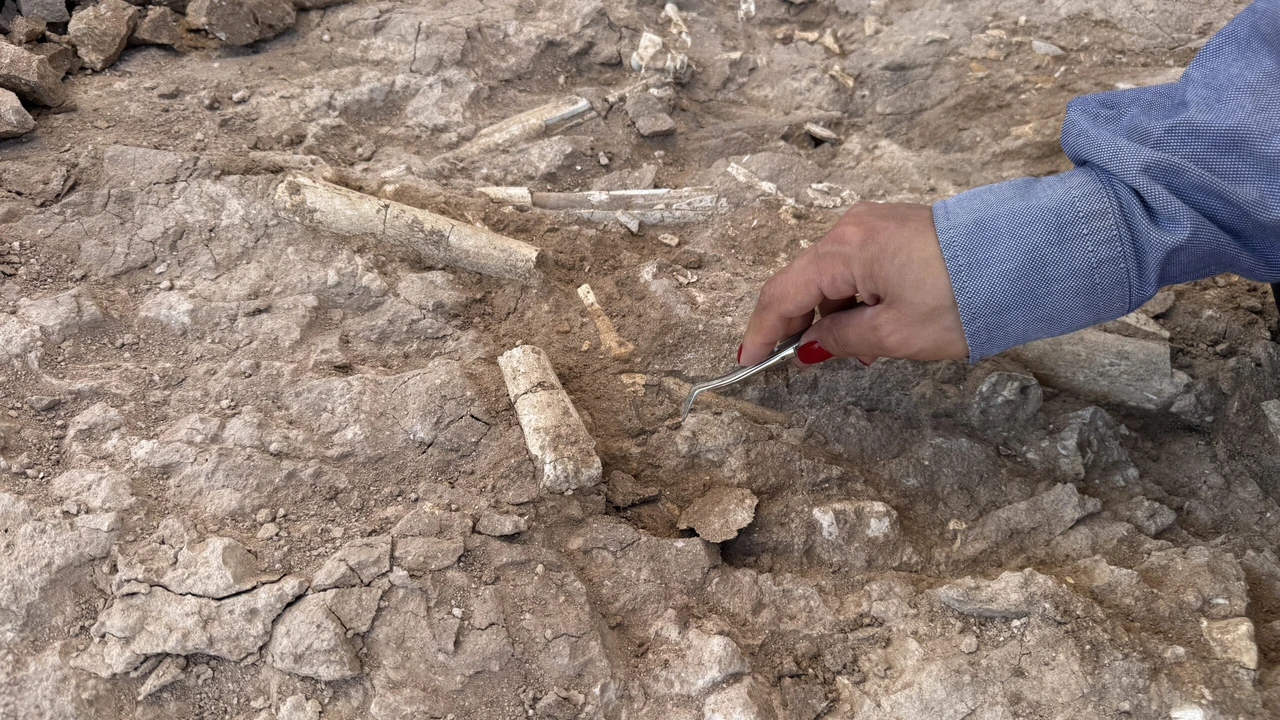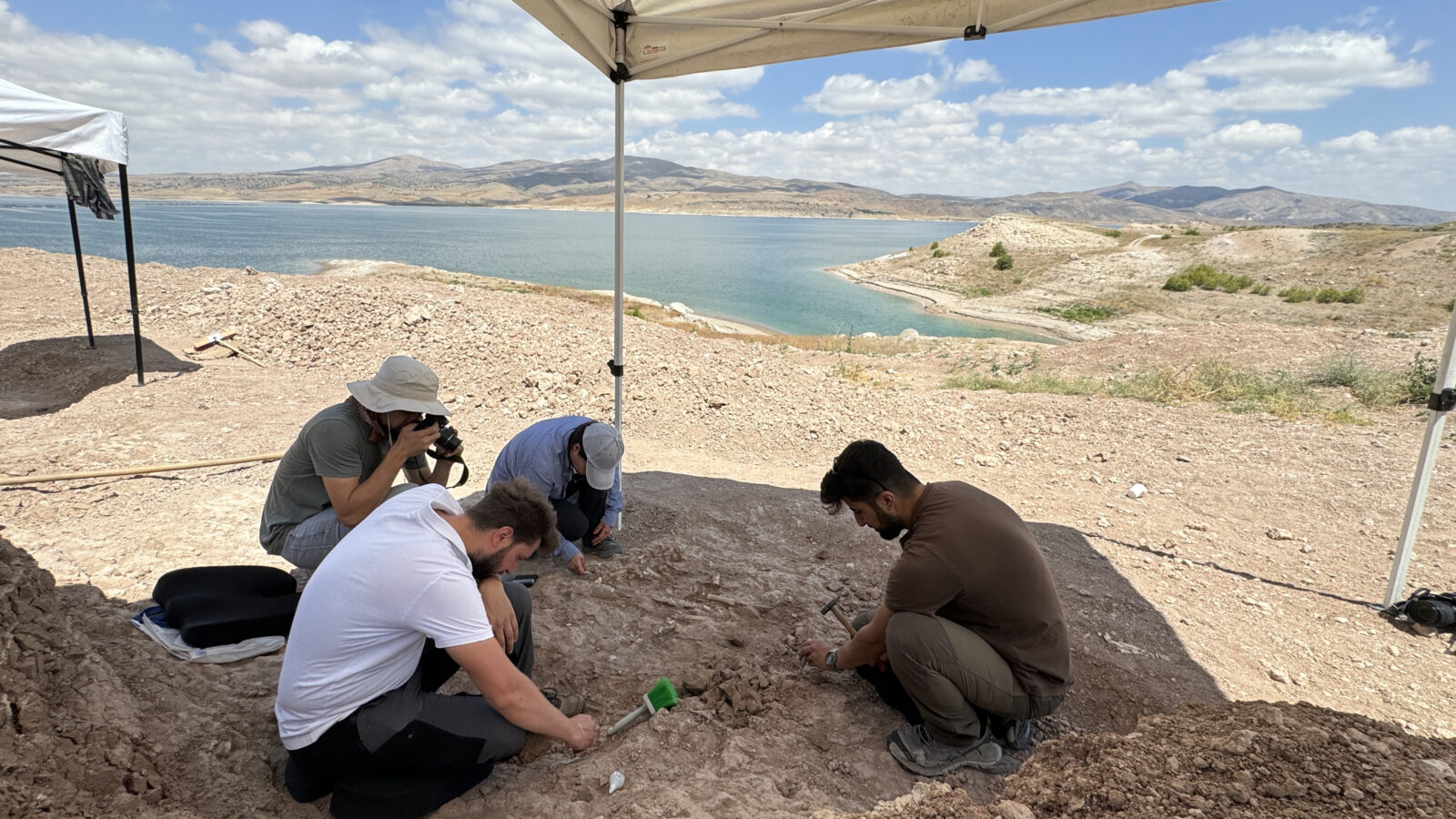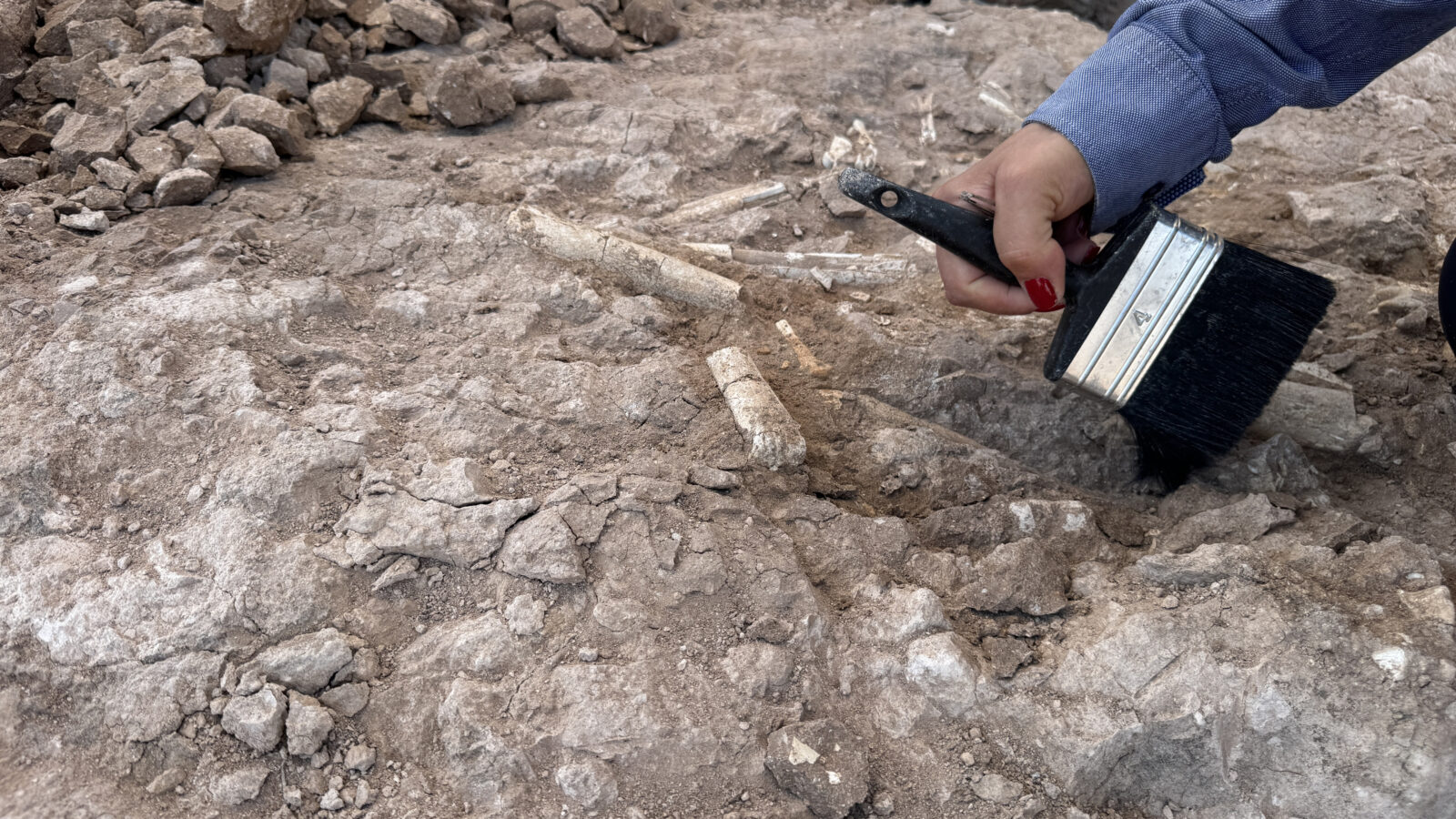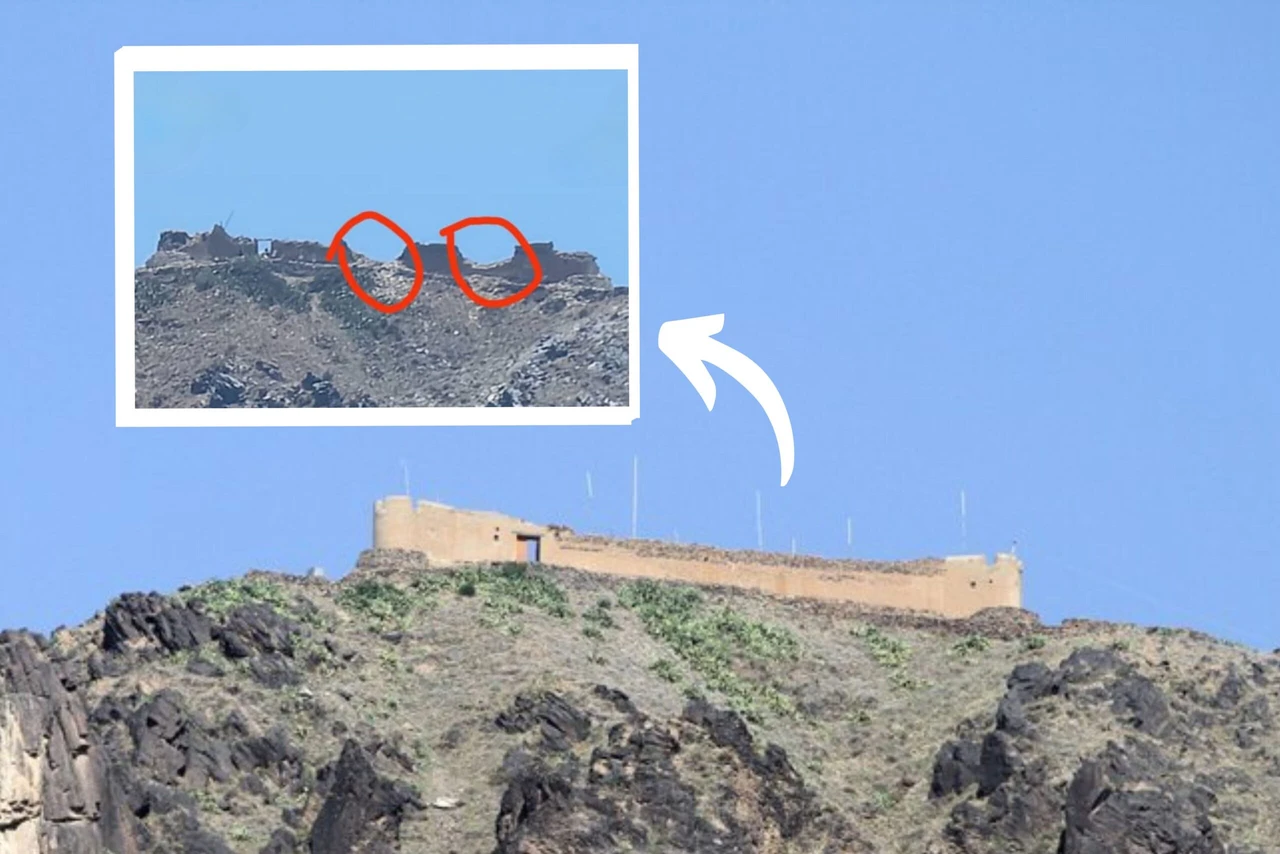Ancient fossils discovered near Türkiye’s Yamula Dam draw global attention
 Excavation work around the Yamula dam, in Kayseri, Türkiye, July 11, 2024 (AA Photo)
Excavation work around the Yamula dam, in Kayseri, Türkiye, July 11, 2024 (AA Photo)
The diversity of animal remains unearthed during excavations near Kayseri’s Yamula Dam, which began following the discovery of a 7.5-million-year-old fossil by a shepherd in 2018, continues to draw significant attention.
These excavations, led by Prof. Dr. Oksan Basoglu, Head of the Department of Anthropology at Ankara Haci Bayram Veli University, are taking place around the Yamula Dam, which is built on the Kızılırmak River.
As of June, the team has been conducting cleaning operations in the Cevril Neighborhood and continues excavations in designated areas.

Anthropologist Oguzhan Koyluoglu told AA correspondent that, despite the season just starting, they have already uncovered horse and bovid fossils dating back 7.5 million years, similar to previous discoveries.
Koyluoglu shared that previous excavations in Cevril Neighborhood had revealed fossils of elephants, rhinoceroses, giraffes, horses, and bovids.
“The area around Yamula Dam has an extensive megafauna (giant animals) analysis. It hosts 5-6 genera of the Proboscidea order, which is rarely seen in other excavations in Türkiye.
Additionally, we have found fossils of bovids, three-toed horses, rhinoceroses, giraffes, and predators like hyenas and lions. We also found a few pig fossils,” Koyluoglu said.

Highlighting the significance of the pig fossil, Koyluoglu continued, “In fauna where pig fossils are found, we often see hominids, the primate order to which humans belong. Finding this would be incredibly exciting for us.”
We have found a molar tooth of an elephant genus. If we can find its skull, it would be a thrilling discovery for us. Primates tell us about human history. There are examples of this in Türkiye, such as in the excavations at Kirsehir Kurutlu, Bursa Pasalar, Ankara Sinap, and Cankiri Corakyerler. If we find it here as well, we will complete the Kizilirmak basin, excluding Bursa.”
“We observe a decrease in size as we dig deeper,” said archaeologist Mevlude Sevgin.
Archaeologist Mevlude Sevgin mentioned that the team meticulously surveys the area, even crawling on the ground when necessary, to identify the layers of their work.

Each year, they uncover a significant number of fossils. Initially, they aim to determine the thickness of the layers, encountering a diverse and complex faunal variety.
Sevgin explained that they have come across giraffe teeth and interlocking fossils.
“As we dig deeper, we see a reduction in size in faunal terms. In the upper layers, we might find antelope-like creatures about 1-1.5 meters tall. However, after digging about a meter deeper, we find the same species but in sizes similar to today’s roosters or chickens. We have not yet identified any change in the size of giraffes from the upper layers,” Sevgin concluded.



